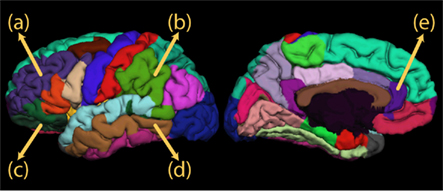

Even though an ORC processing disadvantage was suggested for Turkish, the results were not conclusive. Existing relative clause processing literature in Turkish is based solely on behavioural metrics. However, studies carried out in head-final languages such as Chinese and Basque refuted this claim. It was suggested that processing subject relative clauses (SRCs) are universally easier than processing object relative clauses (ORCs) based on the studies carried out in head-initial languages such as English, and German. L’impact du bilinguisme sur la lecture de mots irréguliers serait également médiatisé par la CM en 1ère année, mais pas ultérieurement. L’étude transversale a montré une supériorité bilingue en CM à tous les niveaux scolaires (1ère, 3ème et 5ème année de l’école élémentaire) et une contribution de cette dernière à la lecture de mots et de texte en 1ère année et à la lecture de texte en 3ème année chez les monolingues et à la lecture de texte, chez les bilingues et les monolingues, ainsi qu’à la compréhension de phrases chez les bilingues en 5ème année. L’impact du bilinguisme sur la lecture de pseudo-mots serait médiatisé par la CM. L’étude longitudinale a montré une supériorité bilingue en conscience morpho-dérivationnelle en GSM et en 1ère année, ainsi qu’une contribution de cette dernière à la lecture de pseudo-mots et de texte chez les monolingues et les bilingues. Differential activation may further provide a fascinating window into the language processing potential not recruited in monolingual brains and reveal the biological extent of the neural architecture underlying all human language.Ĭette thèse vise comparer la conscience morphologique (CM) et la lecture de bilingues français-portugais et monolingues francophones, déterminer la contribution de la CM à la lecture et préciser si cette contribution est modérée par le bilinguisme et/ou médiatise l’impact du bilinguisme sur la lecture. The differential activation for bilinguals and monolinguals opens the question as to whether there may possibly be a "neural signature" of bilingualism. The results provide insight into the decades-old question about the degree of separation of bilinguals' dual-language representation. However, an important difference was that bilinguals had a significantly greater increase in the blood oxygenation level-dependent signal in the LIFC (BA 45) when processing English than the English monolinguals. fMRI analyses revealed that both monolinguals (in one language) and bilinguals (in each language) showed predicted increases in activation in classic language areas (e.g., left inferior frontal cortex, LIFC), with any neural differences between the bilingual's two languages being principled and predictable based on the morphosyntactic differences between Spanish and English. Results show that behaviorally, in English, bilinguals and monolinguals had the same speed and accuracy, yet, as predicted from the Spanish-English structural differences, bilinguals had a different pattern of performance in Spanish.

If bilinguals' neural processing differs across their two languages, then differential behavioral and neural patterns should be observed in Spanish and English. The sentences exploited differences between Spanish and English linguistic properties, allowing us to explore similarities and differences in behavioral and neural responses between bilinguals and monolinguals, and between a bilingual's two languages. During functional magnetic resonance imaging (fMRI), participants completed a syntactic "sentence judgment task". Highly proficient and early-exposed adult Spanish-English bilinguals and English monolinguals participated. Abstract Does the brain of a bilingual process language differently from that of a monolingual? We compared how bilinguals and monolinguals recruit classic language brain areas in response to a language task and asked whether there is a "neural signature" of bilingualism.


 0 kommentar(er)
0 kommentar(er)
